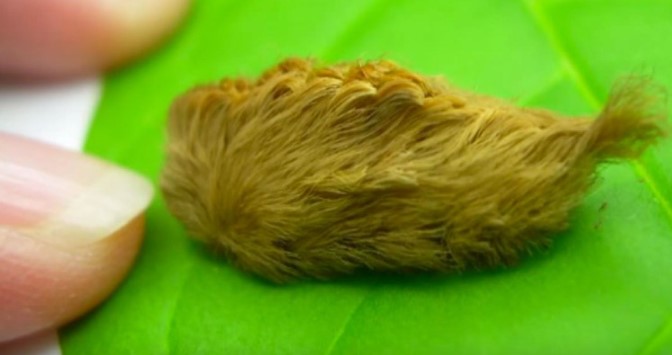It was a sunny afternoon when Leslie Howe decided to take her baby and two other children to Gwinnett County Park for some fresh air and playtime. The park was full of life — children laughing, birds singing, and the gentle rustle of leaves in the breeze. As the children played, they suddenly noticed something unusual on a nearby bench: a small, strange-looking creature, completely covered in soft-looking fur.
At first glance, it seemed harmless — almost cute. Its fuzzy, silky coat made it look like a tiny toy or a harmless insect. Naturally, the children were curious and wanted to touch it. But Leslie’s instincts as a mother kicked in. Something didn’t feel right. She quickly told them to keep their distance.
Later, she learned just how dangerous her decision was. That “adorable” little creature was no ordinary insect — it was the Puss Caterpillar, the most venomous caterpillar in the United States. And her quick thinking may have saved her children from a very painful experience.
The Truth About the Puss Caterpillar
Unlike regular caterpillars, the puss caterpillar (Megalopyge opercularis) has venomous spines hidden beneath its fur. While its silky hairs make it appear soft and harmless, even a gentle touch can deliver a powerful dose of venom.
When a person comes into contact with it, the result can be alarming:
Intense, throbbing pain that can last hours
Severe nausea and dizziness
Excessive sweating
Possible swelling and rash at the site of contact
In more severe cases, the pain can radiate through the body, making it hard to move or concentrate.
Where Is It Found?
Reports show that the puss caterpillar is most common in the southeastern United States, from Florida to North Carolina. They are often spotted in:
Public parks
School playgrounds
Backyards with trees and shrubs
Picnic areas
They can also fall from tree branches onto people below, which means you might not even notice one until it lands on you.
Why Children Are at Higher Risk
Children are naturally curious. The soft, furry look of this caterpillar makes it especially tempting for kids to touch. Unfortunately, that’s exactly what makes it so dangerous. Their smaller bodies can have stronger reactions to venom, leading to more intense symptoms and a higher risk of complications.
What to Do If You’re Stung
If you or your child is stung by a puss caterpillar:
- Do not rub the area — this can push the venom deeper.
- Use tape to gently lift away any remaining hairs from the skin.
- Wash the area with soap and water.
- Apply ice packs to reduce pain and swelling.
- Take an over-the-counter pain reliever if needed.
- Seek medical attention immediately if symptoms worsen.
How to Stay Safe Outdoors
Teach children not to touch insects or caterpillars, no matter how cute they look.
Wear long sleeves and pants when in wooded areas.
Check picnic benches and playground equipment before sitting.
Stay aware of caterpillar season in your area — they are most active in late summer and fall.
A Mother’s Instinct Saved the Day
Leslie Howe’s quick reaction may have prevented a day in the park from turning into a trip to the emergency room. Her story is a powerful reminder for parents everywhere: when it comes to strange creatures in nature, it’s always better to be safe than sorry.
So next time you’re enjoying the outdoors with your children, keep an eye out — you never know what might be hiding in plain sight.
This story is for informational and entertainment purposes only. The events are based on real reports.
